Aim:
To study the characteristics of the hydraulic jump formed in a rectangular channel with the aid of laboratory flume.
Apparatus:
1. 6 m x 0.5 m x 0.5 m Tilting flume
2. Pointer gauge
Formulae:
1. Froude Number, `Fr_{1} = \frac{v}{\sqrt{gy_{1}}}`
2. Loss of energy, `\triangleE = E_{1}-E_{2}` m of water
3. Height of the jump, `h_{j} = y_{2}-y_{1}` m
4. Length of the jump, `L_{j} = 6(y_{2}-y_{1})` m
where,
g = Acceleration due to gravity = 9.8 m/sec2
p1 = Pressure gauge reading at the inlet section in kg/cm2
p2 = Pressure gauge reading at the throat of orificemeter in kg/cm2
x = Difference in pressure gauge readings in kg/cm2 = p1 - p2
h = Head difference between throat and inlet in orificemeter in m = 10(x)
Q = Discharge in m3/sec = `= \frac{C_{d}a_{1}a_{2}\sqrt{2gH}}{\sqrt{a_{1}^{2}-a_{2}^{2}}}`
a1 = Cross-sectional area of the pipeline in m2 = `\frac{\pi d_{1}^{2}}{4}`
a2 = Cross-sectional area at throat in orificemeter in m2 = `\frac{\pi d_{2}^{2}}{4}`
d1 = Diameter of the pipeline in m
d2 = Throat diameter of the orficemeter in m
y1 = Initial depth in m = `\frac{(W.L.R_{1}-B.L.R_{1})}{100}`
y2 = Sequent depth in m = `\frac{(W.L.R_{2}-B.L.R_{2})}{100}`
B.L.R1 = Pointer gauge reading taken at bed level before the jump in cm
W.L.R1 = Pointer gauge reading taken at water level before the jump in cm
B.L.R2 = Pointer gauge reading taken at bed level after the jump in cm
W.L.R2 = Pointer gauge reading taken at water level after the jump in cm
v1 = Velocity of flow before jump in m/sec = `\frac{Q}{By_{1}}`
v2 = Velocity of flow after the jump in m/sec = `\frac{Q}{By_{2}}`
E1 = Specific energy before the jump in m of water = `y_{1}+\frac{v_{1}^{2}}{2g}`
E2 = Specific energy after the jump in m of water = `y_{2}+\frac{v_{2}^{2}}{2g}`
Theory:
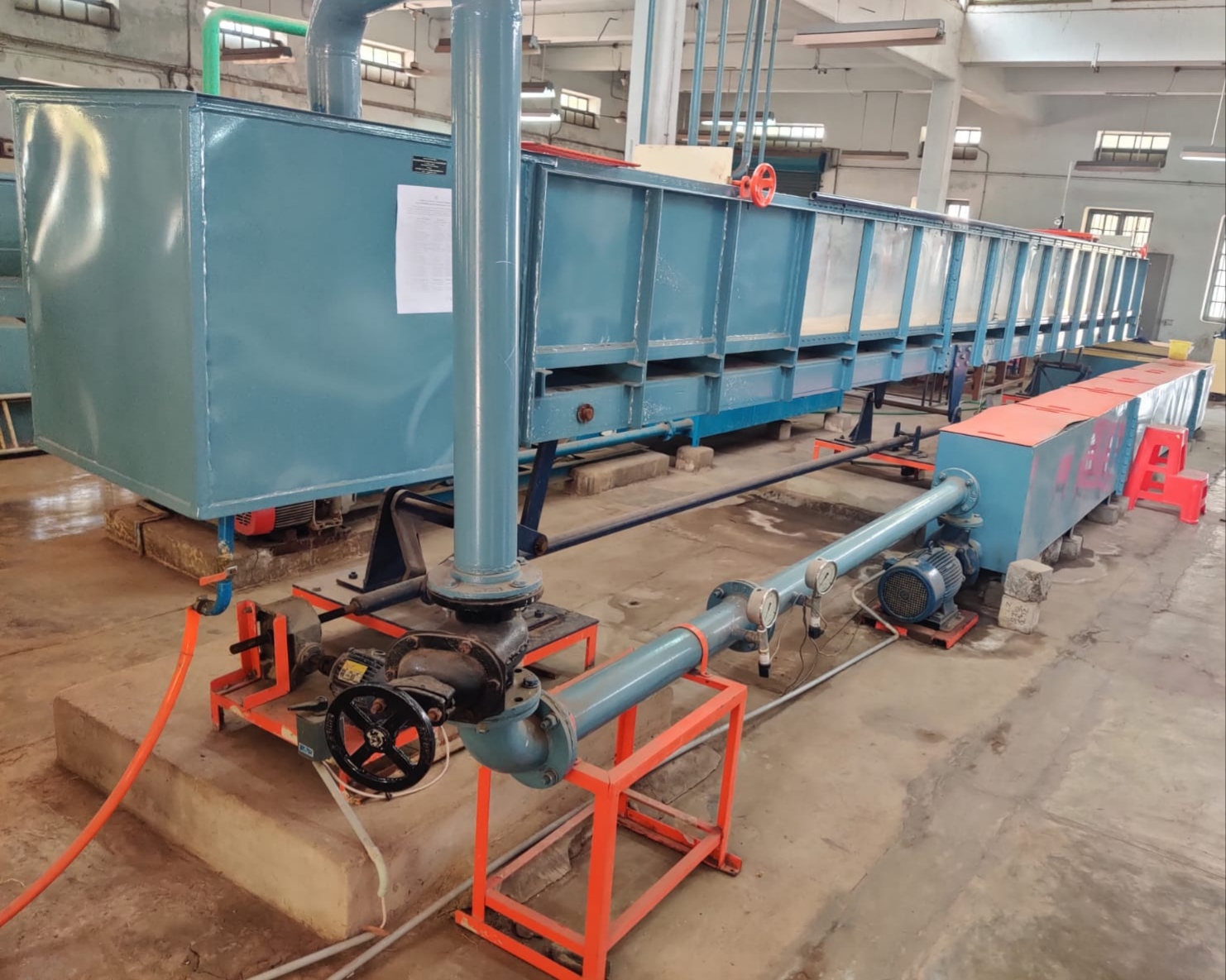
Hydraulic jump is defined as the sudden and turbulent passage of water from a super criticical state to sub critical state. It has been classified as rapidly varied flow, since the change in depth of flow from rapid to tranquil state is in an abrupt manner over a relatively short distance. The flow in a hydraulic jump is accompanied by the formation of extremely turbulent rollers and there is a considerable dissipation of energy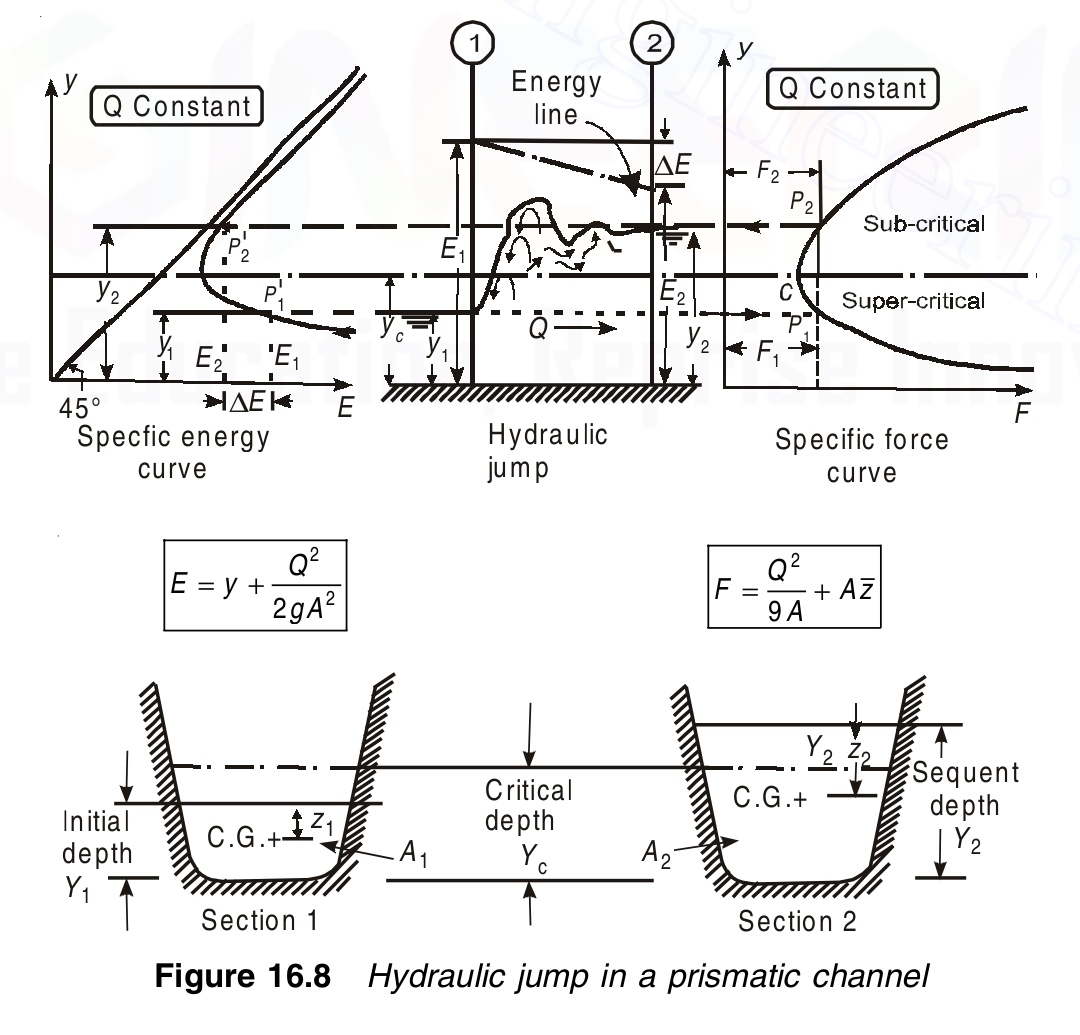
Hydraulic jump will form when water moving at a superficial velocityin a relatively shallow stream strikes water having a relatively large depth and subcritical velocity. It occurs frequently in a canal below a regulating sluice,at a foot of a spillway, or at the place where a steep channel bottom slope suddenly changes to a bottom slope.
Procedure:
1. Note down the dimensions of the tilting flume.
2. Open the supply valve, and adjust the inlet and exit gates so that the flow becomes uniform and steady.
3. Gradually lower the sluice gate and adjust the exit gate so that a stable hydraulic jump forms on the down stream side of the sluice gate.
4. Measure the depth of bed level of the flume and water surface level before and after the hydraulic jump formed inside the flume with pointer gauge mounted on top rails.
5. Note down the readings of pressure guages connected to the inlet section and throat section of venturimeter inside the pipe.
6. Repeat the above procedure for different pressure gauge readings obtained by regulating the flow valve
Observations:
Length of the flume, L = ........... m
Width of the flume, B = .......... m
Depth of the flume, D = .......... m
Inlet diameter of the orifice, d1 = .......... m
Throat diameter of the orificemeter, d2 = .......... m
Least count of the pointer gauge, L.C = .......... cm
Coefficient of discharge of the orificemeter, Cd = ..........
Table:
| SNo. |
p1 (kg/cm2) |
p2 (kg/cm2) |
x (m) |
h (m) |
B.L.R1 (cm) |
W.L.R1 (cm) |
y1 (m) |
B.L.R2 (cm) |
W.L.R2 (cm) |
y2 (m) |
Q (m3/sec) |
v1 (m/sec) |
E1 (m of water) |
Fr1 | v2 (m/sec) |
E2 (m of water) |
ΔE (m of water) |
Lj(m) | hj(m) |
|---|---|---|---|---|---|---|---|---|---|---|---|---|---|---|---|---|---|---|---|
| 1 | |||||||||||||||||||
| 2 | |||||||||||||||||||
| 3 |
Graphs:
1. Lj / y2 Vs Fr1: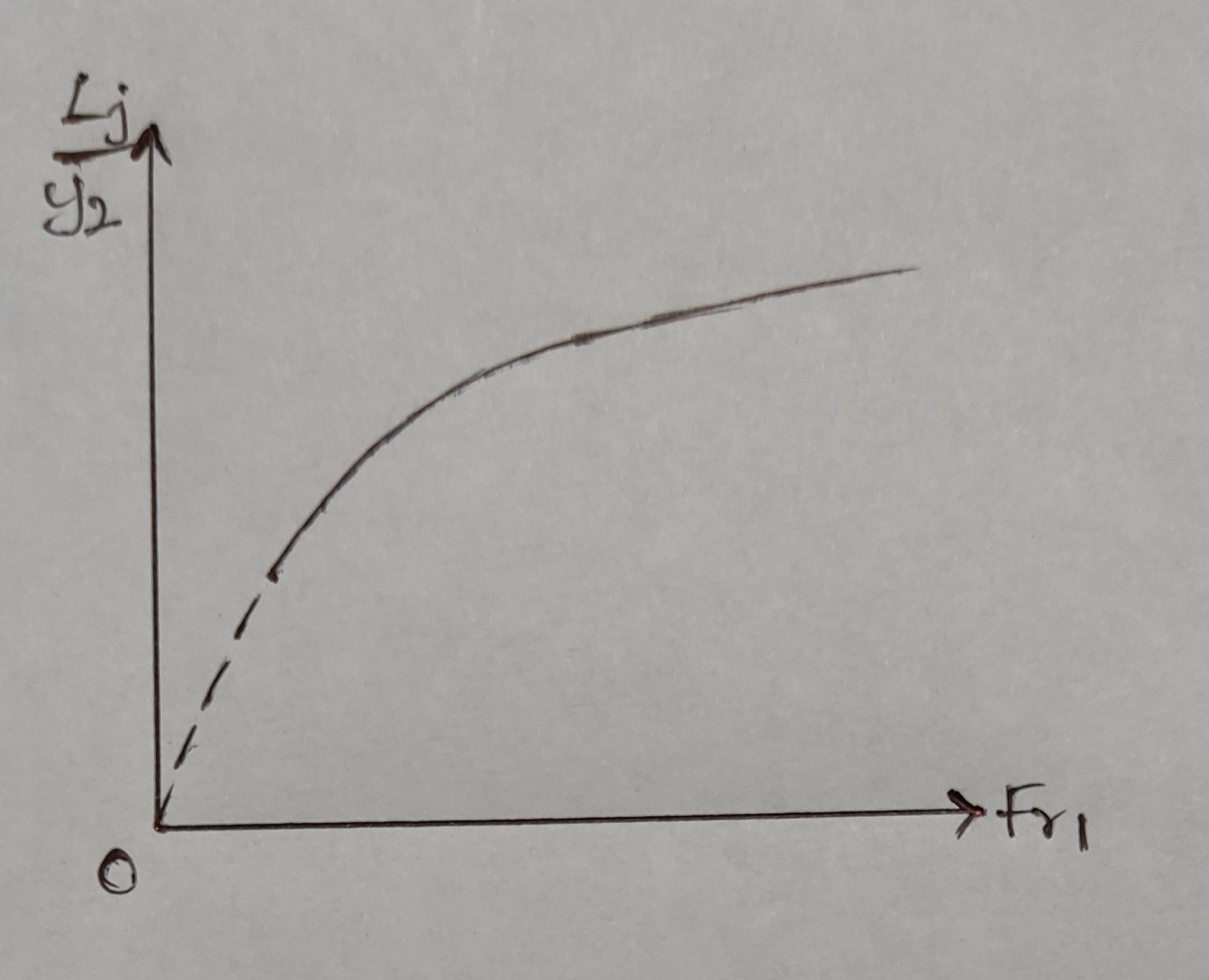
2. y2 / y1 Vs Fr1: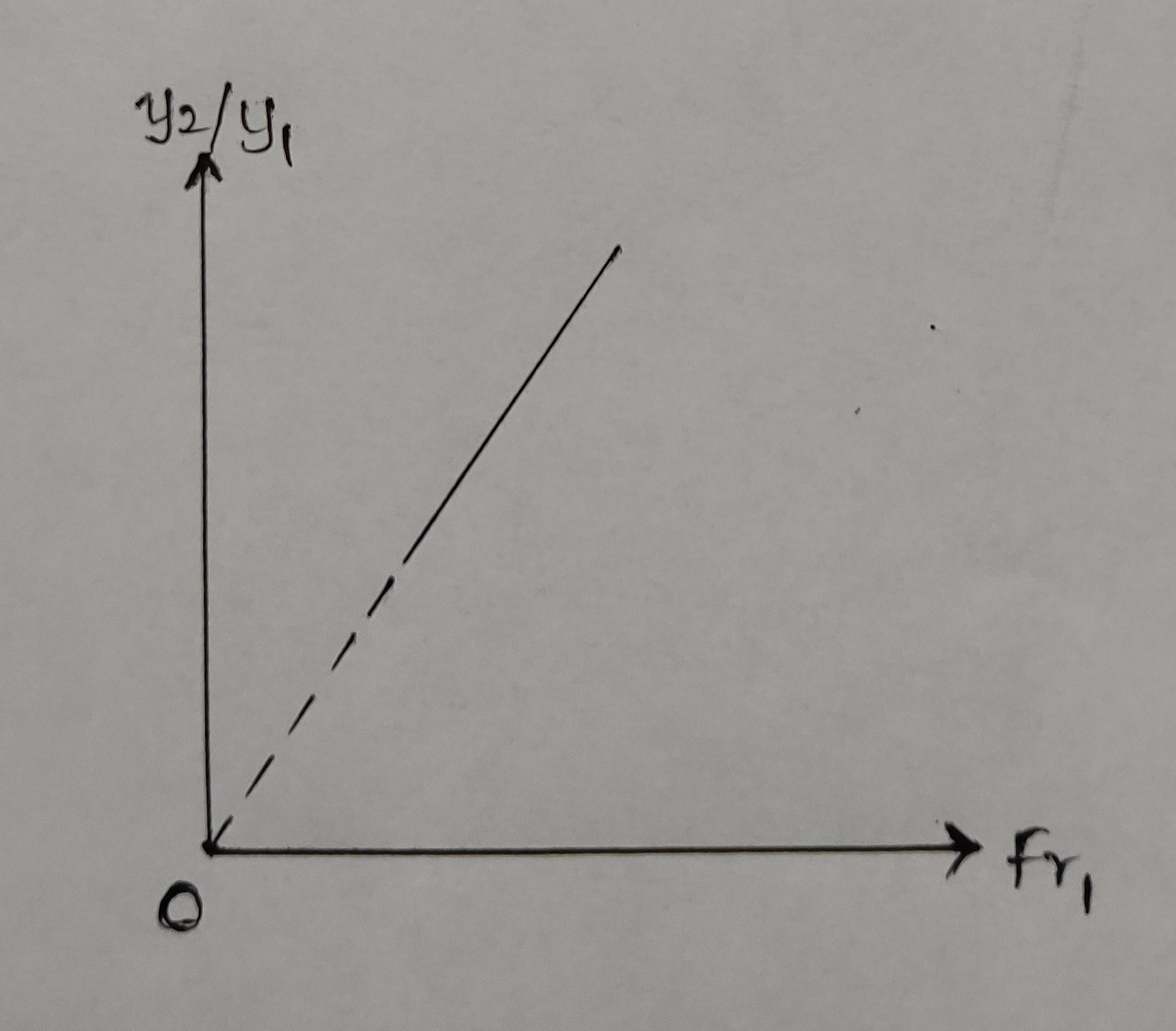
3. ΔE / E1 Vs Fr1: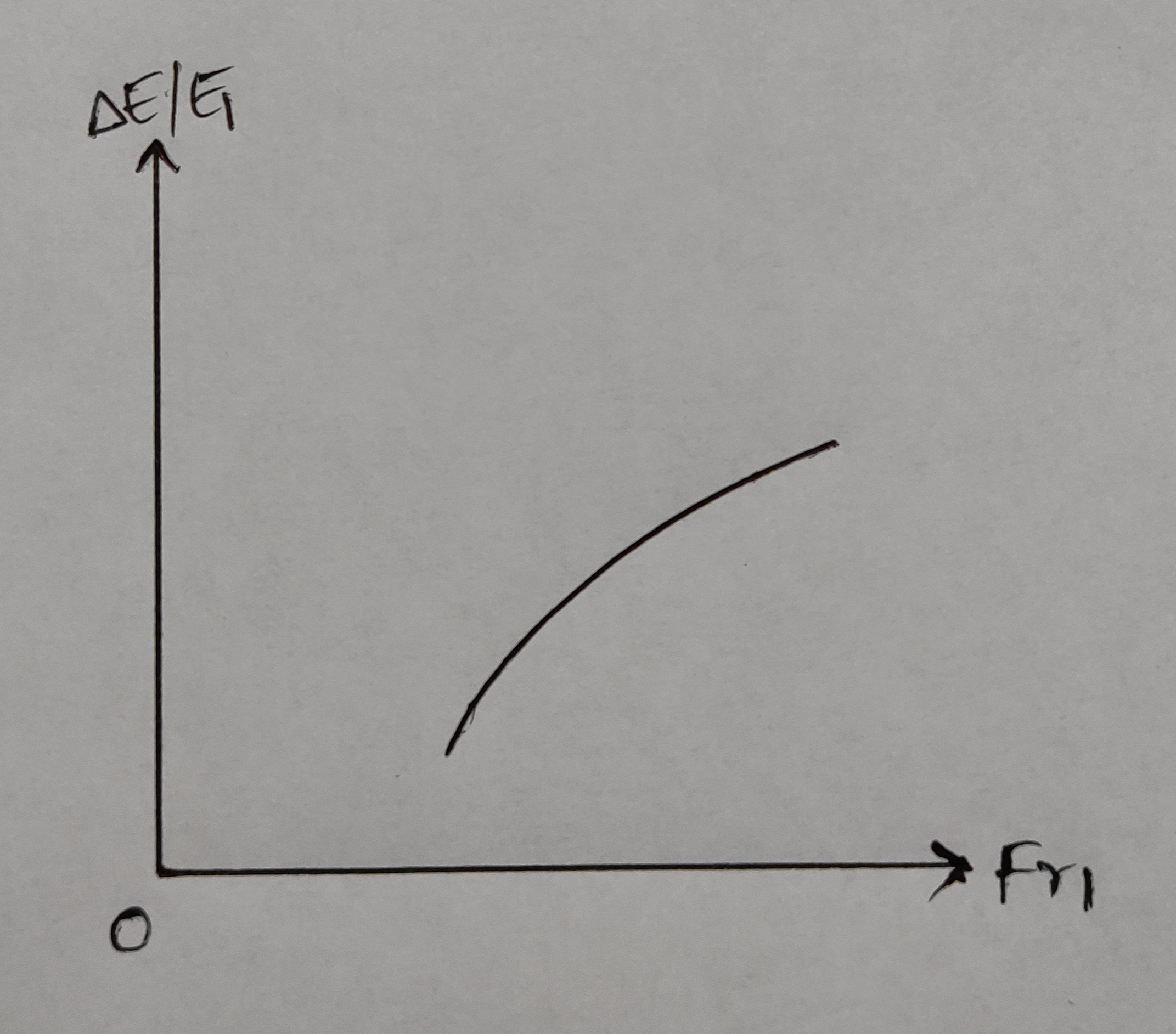
Precautions:
1. Sufficient time should be given for the flow to become steady uniform and also for the formation of hydraulic jump.
2. While measuring the water surface level of the flow in flume, the pointer gauge should touch the free water surface.
3. Note down the pointer gauge readings and pressure gauge readings carefully.
Result:
The characteristics of the hydraulic jump have been studied and the
1. Froude number, Fr1 = ..........
2. Energy loss = ........... m of water